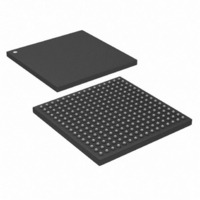DS26518GN+ Maxim Integrated Products, DS26518GN+ Datasheet - Page 24

DS26518GN+
Manufacturer Part Number
DS26518GN+
Description
IC TXRX T1/E1/J1 8PORT 256-CSBGA
Manufacturer
Maxim Integrated Products
Type
Transceiverr
Specifications of DS26518GN+
Number Of Drivers/receivers
8/8
Protocol
T1/E1/J1
Voltage - Supply
3.135 V ~ 3.465 V
Mounting Type
Surface Mount
Package / Case
256-CSBGA
Lead Free Status / RoHS Status
Lead free / RoHS Compliant
- Current page: 24 of 312
- Download datasheet (3Mb)
RMSYNC1/
RMSYNC2/
RMSYNC3/
RMSYNC4/
RMSYNC5/
RMSYNC6/
RMSYNC7/
RMSYNC8/
RCHBLK1/
RCHBLK2/
RCHBLK3/
RCHBLK4/
RCHBLK5/
RCHBLK6/
RCHBLK7/
RCHBLK8/
RFSYNC1
RFSYNC2
RFSYNC3
RFSYNC4
RFSYNC5
RFSYNC6
RFSYNC7
RFSYNC8
RCHCLK1
RCHCLK2
RCHCLK3
RCHCLK4
RCHCLK5
RCHCLK6
RCHCLK7
RCHCLK8
RLF/LTC1
BPCLK1
RSIG1
RSIG2
RSIG3
RSIG4
RSIG5
RSIG6
RSIG7
RSIG8
CLKO/
NAME
N12
D11
R11
R13
C12
G13
P10
E12
A12
F12
T11
T13
PIN
M5
C4
C6
P4
P6
D4
E6
R5
E4
B5
E8
D3
L6
T5
Output
Output
Output
Output
Output
TYPE
Receive Multiframe/Frame Synchronization 1 to 8. A dual function pin to
indicate frame or multiframe synchronization. RFSYNCn is an extracted 8kHz
pulse, one RCLKn wide that identifies frame boundaries. RMSYNCn is an
extracted pulse, one RCLKn wide (elastic store disabled) or one RSYSCLKn wide
(elastic store enabled), that identifies multiframe boundaries. When the receive
elastic store is enabled, the RMSYNCn signal indicates the multiframe sync on
the system (backplane) side of the elastic store. In E1 mode, this pin can indicate
either the CRC-4 or CAS multiframe as determined by the RSMS2 control bit in
the Receive I/O Configuration register (RIOCR.1).
Receive Signaling 1 to 8. Outputs signaling bits in a PCM format. Updated on
rising edges of RCLKn when the receive-side elastic store is disabled. Updated
on the rising edges of RSYSCLKn when the receive-side elastic store is enabled.
See
Receive Channel Block/Receive Channel Block Clock. This pin can be
configured to output either RCHBLK or RCHCLK.
RCHBLK[1:8]. RCHBLKn is a user-programmable output that can be forced high
or low during any of the 24 T1 or 32 E1 channels. It is synchronous with RCLKn
when the receive-side elastic store is disabled. It is synchronous with RSYSCLKn
when the receive-side elastic store is enabled. This pin is useful for blocking
clocks to a serial UART or LAPD controller in applications where not all channels
are used such as fractional service, 384kbps service, 768kbps, or ISDN-PRI. Also
useful for locating individual channels in drop-and-insert applications, for external
per-channel loopback, and for per-channel conditioning.
RCHCLK[1:8]. RCHCLKn is a 192kHz (T1) or 256kHz (E1) clock that pulses high
during the LSB of each channel. It is synchronous with RCLKn when the receive-
side elastic store is disabled. It is synchronous with RSYSCLKn when the
receive-side elastic store is enabled. It is useful for parallel-to-serial conversion of
channel data.
Backplane Clock 1. Programmable clock output that can be set to 2.048MHz,
4.096MHz, 8.192MHz, or 16.384MHz. The reference for this clock can be
RCLK[8:1], a 1.544MHz or 2.048MHz clock frequency derived from MCLK, or an
external reference clock (REFCLKIO). This allows system clocks to be referenced
from external sources, the T1J1E1 recovered clocks, or the MCLK oscillator.
Clock Out. Clock output pin that can be programmed to output numerous
frequencies referenced to MCLK. Frequencies available: 1.544MHz, 2.048MHz,
4.096MHz, 8.192MHz, 12.288MHz, 16.384MHz, 256kHz, and 64kHz.
GTCCR3.CLKOSEL[2:0] selects the frequency.
Receive Loss of Frame/Loss of Transmit Clock. This pin can also be
programmed to either toggle high when the synchronizer is searching for the
frame and multiframe, or to toggle high if the TCLKn pin has not been toggled for
approximately three clock periods.
RLF/LTC1 is available on the DS26518 when GTCR1.528MD = 1.
Table
24 of 312
9-7.
FUNCTION
Related parts for DS26518GN+
Image
Part Number
Description
Manufacturer
Datasheet
Request
R

Part Number:
Description:
8-port T1/e1/j1 Transceiver
Manufacturer:
Maxim Integrated Products, Inc.
Datasheet:

Part Number:
Description:
Ds26518 8-port T1/e1/j1 Transceiver
Manufacturer:
Maxim Integrated Products, Inc.

Part Number:
Description:
power light source LUXEON� Collimator
Manufacturer:
LUMILEDS [Lumileds Lighting Company]
Datasheet:

Part Number:
Description:
MAX7528KCWPMaxim Integrated Products [CMOS Dual 8-Bit Buffered Multiplying DACs]
Manufacturer:
Maxim Integrated Products
Datasheet:

Part Number:
Description:
Single +5V, fully integrated, 1.25Gbps laser diode driver.
Manufacturer:
Maxim Integrated Products
Datasheet:

Part Number:
Description:
Single +5V, fully integrated, 155Mbps laser diode driver.
Manufacturer:
Maxim Integrated Products
Datasheet:

Part Number:
Description:
VRD11/VRD10, K8 Rev F 2/3/4-Phase PWM Controllers with Integrated Dual MOSFET Drivers
Manufacturer:
Maxim Integrated Products
Datasheet:

Part Number:
Description:
Highly Integrated Level 2 SMBus Battery Chargers
Manufacturer:
Maxim Integrated Products
Datasheet:

Part Number:
Description:
Current Monitor and Accumulator with Integrated Sense Resistor; ; Temperature Range: -40°C to +85°C
Manufacturer:
Maxim Integrated Products

Part Number:
Description:
TSSOP 14/A�/RS-485 Transceivers with Integrated 100O/120O Termination Resis
Manufacturer:
Maxim Integrated Products

Part Number:
Description:
TSSOP 14/A�/RS-485 Transceivers with Integrated 100O/120O Termination Resis
Manufacturer:
Maxim Integrated Products

Part Number:
Description:
QFN 16/A�/AC-DC and DC-DC Peak-Current-Mode Converters with Integrated Step
Manufacturer:
Maxim Integrated Products

Part Number:
Description:
TDFN/A/65V, 1A, 600KHZ, SYNCHRONOUS STEP-DOWN REGULATOR WITH INTEGRATED SWI
Manufacturer:
Maxim Integrated Products

Part Number:
Description:
Integrated Temperature Controller f
Manufacturer:
Maxim Integrated Products










